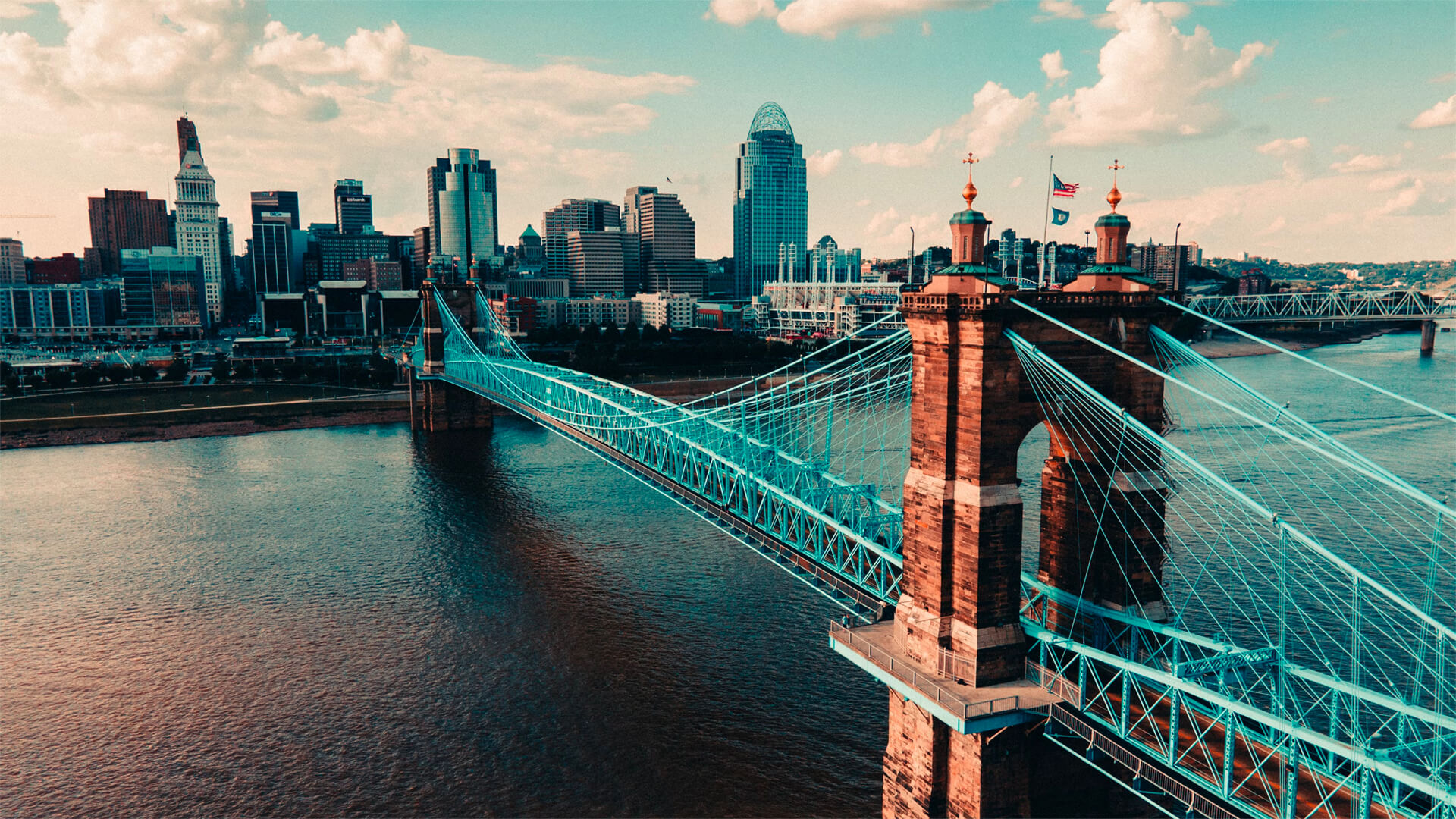If you’ve ever spoken to an Ohio State fan, you know that they’ll tell you how amazing they are without you asking. Unfortunately for all of us, I’ll be adding to their boasting list today because there’s plenty of success and growth in store for Ohio.
After years of stunted economic growth caused by the Jones Act destroying its manufacturing base, Ohio is ready to turn the page like Bob Seger’s hometown. As Ohio’s reindustrialization process kicks off, we’ll see plenty more projects like Intel’s semiconductor facility pop up throughout the state.
Ohio’s political stance has long aligned with national sentiment, and we’re now seeing the state shift toward populism. Between a political shift and Ohio’s manufacturing resurgence, it’s a safe bet that this state (and all those Buckeye fans) will continue to play a critical role in the country’s future.
Here at Zeihan On Geopolitics we select a single charity to sponsor. We have two criteria:
First, we look across the world and use our skill sets to identify where the needs are most acute. Second, we look for an institution with preexisting networks for both materials gathering and aid distribution. That way we know every cent of our donation is not simply going directly to where help is needed most, but our donations serve as a force multiplier for a system already in existence. Then we give what we can.
Today, our chosen charity is a group called Medshare, which provides emergency medical services to communities in need, with a very heavy emphasis on locations facing acute crises. Medshare operates right in the thick of it. Until future notice, every cent we earn from every book we sell in every format through every retailer is going to Medshare’s Ukraine fund.
And then there’s you.
Our newsletters and videologues are not only free, they will always be free. We also will never share your contact information with anyone. All we ask is that if you find one of our releases in any way useful, that you make a donation to Medshare. Over one third of Ukraine’s pre-war population has either been forced from their homes, kidnapped and shipped to Russia, or is trying to survive in occupied lands. This is our way to help who we can. Please, join us.
Transcript
Hey everybody. Peter Zeihan here coming to you from not Idaho and not Iowa, but Ohio. Iowa’s got corn and pigs and soy and insurance and Idaho has potatoes and wheat and the Snake River, Ohio excels at things like manufacture. Or at least they did. Ohio is one of the states has been really hurt by something called the Jones Act, which is something that bars cargo ships from transporting cargo between American ports unless the vessel is 100% American owned.
Captains built in 75% crude. It’s something we did in 1920 as part of the Interstate Commerce Act that absolutely destroyed the ability to move things on the water. And since Ohio is bordered to the south by the Ohio River, which is one of the world’s great waterways, and then the north by the Great Lakes, which are one of the world’s great waterways, Ohio is arguably the State of the Union that has suffered the most.
It also took a big hit because of globalization. Ohio is also the state that has arguably suffered the most from globalization because it had the economic geography that was excellent in terms of lots of flat land that was easy to build infrastructure on and a lot of legacy infrastructure from its industrial period. But with globalization and the United States basically elevated places that didn’t have very good geography as part of our plan to defeat the Soviet Union.
And that meant that places with subpar geography thinking here, Brazil or India or China were able to get a huge leg up. And that gutted a lot of the manufacturing base here. Now, Ohio is still a significant manufacturing player, just not as rich as there used to be. And part of the decline in the use of the waterways and because of globalization is part of the reason why Margo and Donald Trump have done so well in this state and why the state’s politics has taken such a hard turn to the populist right that is in the process of shifting maybe not the political stuff, but all the economic trends.
Globalization means that we need to rebuild a lot of industrial plants in other parts of the world, and all of a sudden geography matters again, and Ohio’s looking pretty good. Ohio is one of the healthier demographers in the advanced world, suggesting that it has a pretty robust potential workforce. And the state and the local governments here in the Columbus area have been very aggressive at going out, including the investment with the single biggest achievement they have been the intel facility that is just down the road here.
Intel is an American semiconductor manufacturer who was the world leader until about six years ago when they made a bad bet. They bet that this new thing called extreme ultraviolet lithography was just not ready for prime time. And they designed their chips using an older type of technology that’s much more expensive to operate and a lot more finicky.
But turns out that EUV actually was ready and the company that bid on or BET on it was TSMC, which is the semiconductor manufacturer out of Taiwan. So today, all the world’s best chips are basically made in Taiwan. And while Intel has designed some of the chips that TSMC makes, they don’t really mean facts for very many of their own.
Certainly not here in the United States. This new facility that’s under construction in Ohio seeks to change that. Specifically, they’ve got these two models called the 20 A and the eight A if works by 2025, they’ll be produced in this facility and they are sub five, even sub three nanometer, which will almost overnight elevate them to producing some of the world’s most advanced chips.
So far, $20 billion have been sunk into this facility, 2 billion of which is local and federal subsidies. And if Intel has its way over the course of the next decade, that number, 20 billion, will increase to a hundred billion. And that’s just for fabrication. That doesn’t include any follow on businesses that are likely to pop up from network effects, whether that is assembly or testing or light manufacturing to take these chips and put them in things that we use every day.
So the potential here for the Ohio region to grow is explosive, and that even assumes that we don’t do anything with the Jones Act. And if we do that, all the old manufacturer, it is likely to come back as well because you just can’t beat the local geography here for internal transport. So will that have political connotations? Probably delay and that’ll get really colorful, but we’re going to cover that in a different video.
I’m just outside Columbus today and we’re going to talk politics a little bit. We’ll use a link in this mail to give you an idea of where I generally think U.S. politics are going. But the general issue here today is we’re at an inflection point. Ohioans are proud that they’ve been voting for the winning side in almost every presidential election for over a century, with all the events in 2020 breaking their pattern.
And the reason both for it happening and the pattern break is Donald Trump. So before 2020, Ohio was the middle of everything middle class, middle income, middle and manufacturing, middle and services. It was very representative of the United States as a whole. So it was very easy to track the political winds based on what the Ohioans were thinking, but they did suffer quite a bit from globalization and something like the Jones Act, as you saw in the previous video.
And so there’s a lot of resentment in the state. And since Donald Trump basically ran on resentment and people who felt they had been left behind, Ohio switched and now is considered a generally populist conservative, socially area. However, if you remember some of my other work, you know that the political factions that make up the country are moving around basically the the American political system is made up of two very large parties because the electoral system forces that into form.
Basically, you have to get one more vote than the other guy in order to win the seat. And so therefore, you don’t want to alienate any potential voters. And in that sort of environment, you two huge parties that are made up of independent factions that shift around based on changes in economics, sociology, politics, demographics and in the last 30 years, we’ve had a lot of things go down.
We’ve had the rise of the baby boomers and now the retirement. We’ve had hyper globalization and now it’s end. We’ve had the rise of social media and the implosion of information transfer. And through all of that, the two parties held together until very recently. And in the Trump era, that relationship is breaking down. Now, Trump did a lot of things for a lot of reasons to a lot of people, but the ones that matter for this discussion is he elevated a faction known as the populist to power, and they are now the single largest voting bloc in the United States.
They’re very powerful here in Ohio. But in doing so, he drove away a number of more traditional factions. He would call them RINOs that include the entirety of the business community. But he was able to court other groups that are more socially conservative, people like the Catholics and the Hispanics over to his side. And as part of that process, there’s now a tug of war between the Democrats and the Republicans over the future of organized labor, where an organized labor is only become more and more powerful over the next decade because we need to build out the industrial plant.
And most of those jobs are blue collar, and we’re an environment of labor shortage. So we’re going to see more and more strikes. What this means is the business community and the labor community, which have traditionally been the two most powerful voting blocs in Ohio, are suddenly Sweden voters. So everyone got used to Ohio being the man in the middle and ultimately representing what we were all thinking.
We’re still there. It’s just that the two factions that matter the most are at the moment not part of the political process. So what we’re going to be seeing over the next few years between this massive re industrialization and buildout and this political shift is Ohio is still going to be the man in the middle. And where they come down is going to determine the shape of our political parties moving forward.
And we’re seeing those arguments across the Ohio political landscape right now with everyone engaged in everybody angry and everyone hopeful, all at the same time. So stay tuned. Watch Columbus. And they’re going to give us our first good taste of what our post-Trump party structure is going to be.








